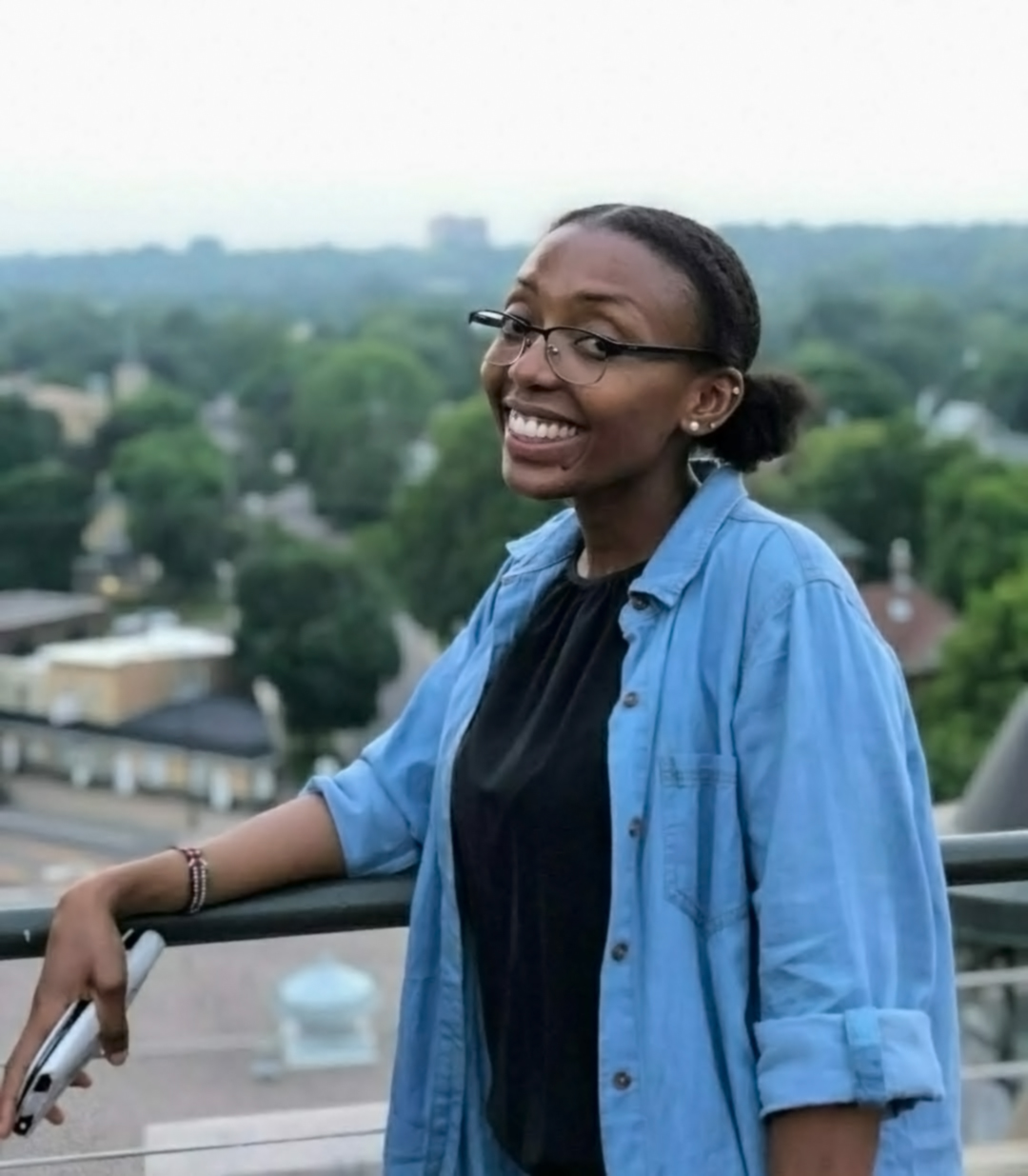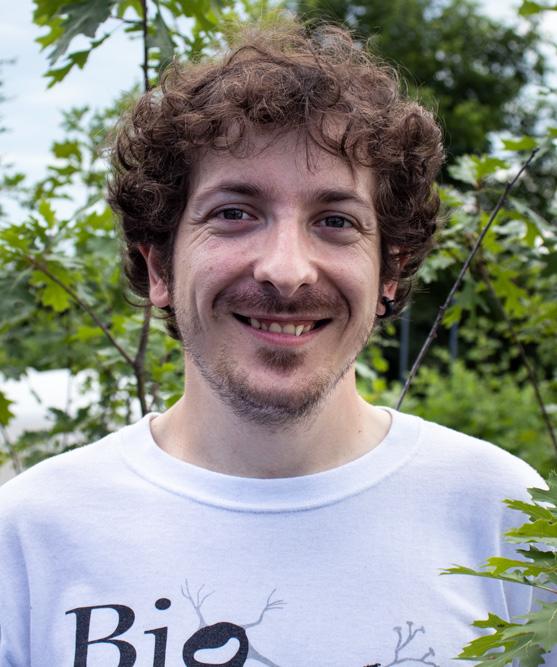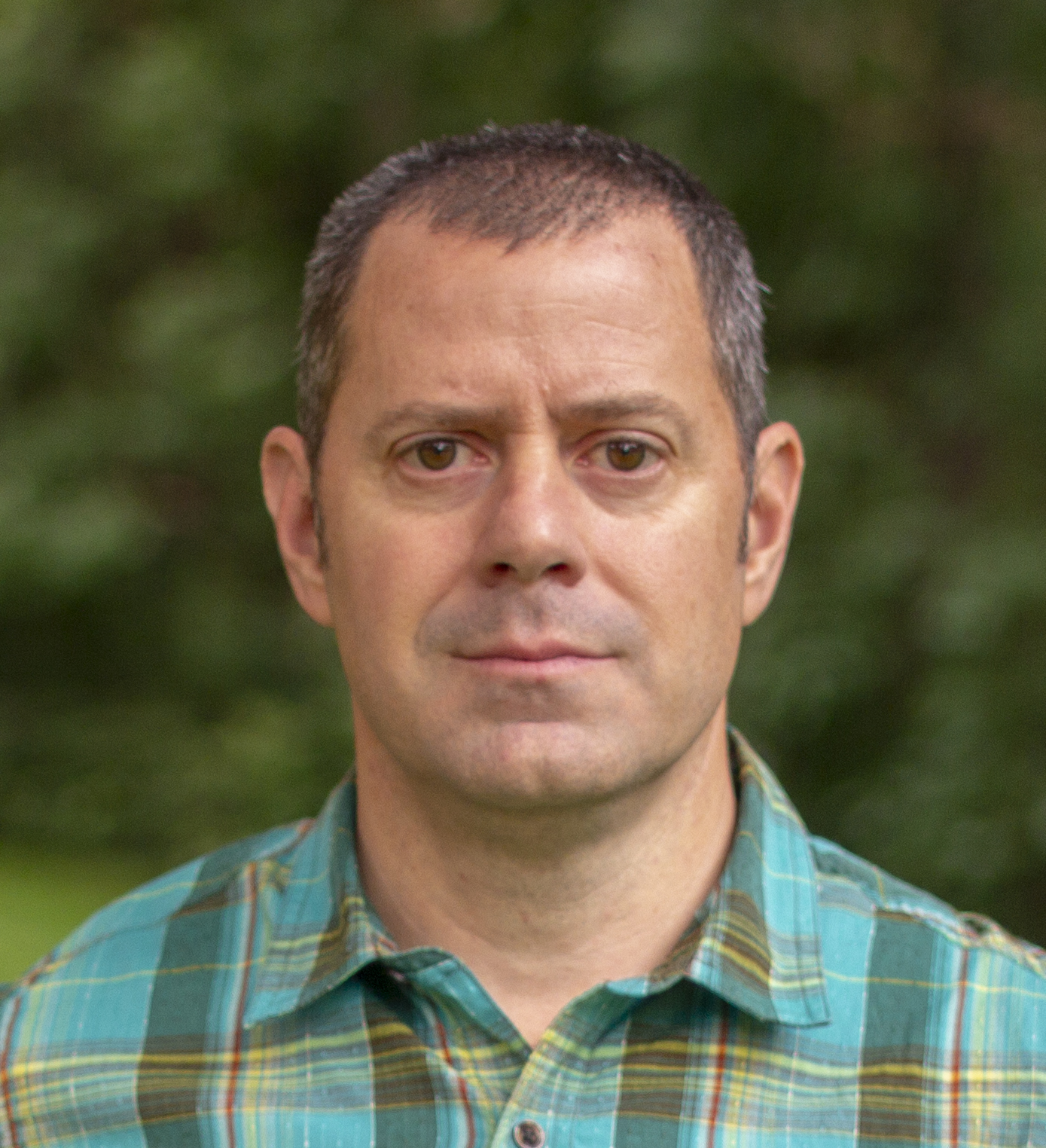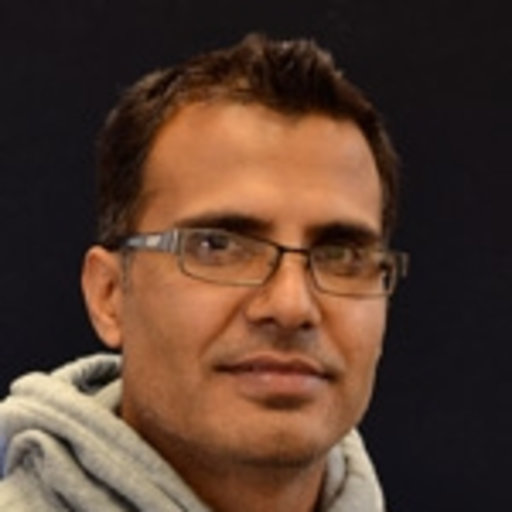July 13, 2020

At MITPPC, we believe the most innovative discoveries emerge as a result of working across boundaries. Our teams pool knowledge and experience across departments, disciplines, campuses, field stations and research and outreach centers.
Our work also benefits from the diverse perspectives of international scholars from around the world – students, postdoctoral associates and faculty alike. They are experts in their field, and we simply could not do the work that we do without their creative vision and dedication to important invasive species issues.
We asked a few of our international scholars about their experiences at the University of Minnesota, below.
Kyungsoo Yoo
Professor, Department of Soil, Water and Climate
South Korea
"The breadth and depth of intellectual energy at the U is sourced from its students and faculty members, who are not afraid of learning from people who are different."
Tell us about your work at the U of M.
My first paper as the first author was about pocket gophers and their contributions to long-term evolution of hilly landscapes. So it may not be a coincidence that I now live and teach in the Gopher State. Over the past years, I have been working hard with my students and collaborators to show that the formerly glaciated forests in the sub-arctic and arctic landscapes are increasingly threatened by invasive earthworms. These high latitude biomes have evolved without native earthworms since the last glaciation, but such status quo is being dramatically altered by human-mediated introduction and dispersal of exotic earthworms. Our ongoing research in Alaska, for example, is shedding a new light on actively growing exotic earthworms and their potentially devastating effects on the boreal forests in the last frontier state. I am also a coPI of a research project to study invasion mechanisms and ecological effects of Jumping earthworms in Minnesota.
Last spring, I opened a new course called "Lands and Humans in World Cultures". The course examines land uses in different cultures, their historical and scientific origins, and their implications for the Anthropocene in which our biggest challenge is to feed the growing population without breaking the earth. I conceived and developed this course based on my extensive research travels, which exposed me to diverse culture-specific land uses and peoples' active roles in simultaneously shaping their socioeconomic histories and the surrounding ecosystems.
What is it like being a part of the international research community here?
The breadth and depth of intellectual energy at the U is sourced from its students and faculty members, who are not afraid of learning from people who are different. I thank my students and colleagues for being like a family to me. Although I carry a South Korean passport, I feel deeply rooted in Minnesota. The most enjoyable part of being a faculty at the U is that it offers abundant opportunities to interact with international students and scholars. Empowering them to fully develop their potentials and share their experiences and thoughts will make the university a better place of learning for humanity.
Dora Mkabili Mwangola
Doctoral Candidate, Department of Entomology
Kenya
"I think what I would like readers to know is that an international research community offers an opportunity to tap into knowledge and different life experiences that you probably wouldn’t be able to get in a book or classroom."
Tell us about your work at the U of M.
I think there are a lot of moments related to my research and teaching that I have been proud to be a part of, but I think I will focus on one part of my graduate experience that I have discovered during my time here and really enjoy: outreach/speaking to the public about science and my work. Getting to share science with the public has been such a highlight for me. Since I am in the entomology department, it has mainly been sharing about insects and my work when we are out at my study sites in various cities across Minnesota. It's so cool to see kids go from, "That insect is gross," or "It's scary!" to, "I will try and touch it" and in some cases to, "I guess it is kind of cute.” It’s a learning experience for me too because I get to hear about people’s experience with science, insects and trees, which fuels my excitement about what I do. Getting to meet the homeowners who could potentially be impacted by the project I am working on, hearing about their love for their trees and their experience with them is an additional motivating factor for my work.
What is it like being a part of the international research community here?
I think what I would like readers to know is that an international research community offers an opportunity to tap into knowledge and different life experiences that you probably wouldn’t be able to get in a book or classroom. I have benefited a lot from interacting with people from diverse backgrounds, with different worldviews, experiences and expertise. This is not just true professionally/academically – it has also had an impact on my self-development. It has opened my mind to different ways of looking at things and approaching problems and taught me how to better interact with people.
The Minnesota winters have taken some getting used to, but they have helped me appreciate the summers a lot more. It has been an amazing experience for me. I have learnt a lot both in classes and outside them at conferences, and I have grown as a person. I largely attribute that to the people I have been fortunate to interact with, who have helped me settle in and who have played major roles in making my time here worthwhile: lab mates, collaborators, classmates, lecturers, advisors/committee members, staff, organizations in the university focused on advocating for certain voices and promoting different causes. It was pretty daunting leaving home and coming to a place where I don’t know anyone. A lot of things are new to me and different, and I miss home. But now four years into my PhD, I definitely think I made the right decision to come here.


Gerard Sapés
Postdoctoral Associate,
Department of Ecology, Evolution and Behavior
Spain
"The boundaries among disciplines have blurred and the expertise and viewpoints of a single researcher are not enough to answer them anymore."
Tell us about your work at the U of M.
I have been fortunate to be part of a MITPPC project with Drs. Cavender-Bares, Jennifer Juzwik and Rebecca Montgomery working on detection and control of invasive species. Together, we have found a way to detect and map oak trees infected with a deadly invasive fungus responsible for decimating oak forests across the Midwest. Our method takes advantage of the fact that photons from the sun are reflected differently both among species of trees and between healthy and infected trees. Because of this, we can detect which trees are oaks and which oaks are infected with the fungus from images taken from sensors in airplanes flying over forests that capture how sunlight is reflected from canopies. This new technology will enable forest managers to find infected areas and contain the fungus before it spreads uncontrollably. We are working to save our native forests and the many services they provide to our society!
What is it like being a part of the international research community here?
We all recognize “thinking outside the box” as an important quality. It is a metaphor for thinking differently, unconventionally, or from a new perspective. It refers to novel or creative thinking. As individuals, each one of us lives within a box shaped by the many constructs, societal norms, and personal experiences that result from living in our society. This box constrains our views and limits our ability to think freely because we are taught to think in particular ways. We all acknowledge this and, when facing complex problems, often look for external input from those who hold a different point of view. We want a fresh perspective. A peek from outside our little box.
The same process happens in science. Discovery always comes with new questions, and questions have become more and more complex over time with advances in science. The boundaries among disciplines have blurred and the expertise and viewpoints of a single researcher are not enough to answer them anymore. These days, it is rare to see scientific articles with a single author because answering complex questions requires observing them from different perspectives. Strong research emerges from combining diverse ideas and diverse ideas emerge from diverse teams. Diverse ideas require teams of people who have lived different experiences and circumstances and with different backgrounds. International collaborations maximize diversity among team members thanks to their rich cultural, social, and personal backgrounds. Without any doubt, being part of international teams has been one of the main reasons leading to success in my research projects.
Pablo D. Olivera Firpo
Research Assistant Professor, Department of Plant Pathology
(Ph.D. from U of M)
Uruguay
"It is so hard to imagine the Department of Plant Pathology without a strong international exposure, involvement and connection."
Tell us about your work at the U of M.
In 2013 there was a severe stem rust epidemic that affected the largest wheat-growing area in Ethiopia, causing complete loss of wheat crop to hundreds of smallholder farmers. I was part of an international partnership including the USDA Cereal Disease Laboratory and the University of Minnesota in St. Paul, the Ethiopian Institute of Agricultural Research and other international research organizations. We quickly responded to the crisis by identifying the pathogen race responsible for the epidemic and its virulence profile, and assessed the vulnerability of the Ethiopian wheat cultivars and breeding lines to this new virulent race. I consider this to be my proudest research accomplishment not only because results were published in a peer-reviewed paper – for which I am the leading author – that has been widely cited by the wheat rust community, but also, and most importantly, because it strongly impacted the efforts to improve the resistance to this devastating disease in Ethiopian wheat cultivars.
What is it like being a part of the international research community here?
The Department of Plant Pathology at the University of Minnesota is a great fit for international students and scientists. The international community has always been an integral part of the department’s life and has significantly contributed to its strong reputation and legacy. First as a graduate student and now as faculty, I have conducted all my research at the University of Minnesota in strong collaboration with international partners from all over the globe. I have always appreciated the Department’s engagement with the international scientific community, and its impact on a global level. It is so hard to imagine the Department of Plant Pathology without a strong international exposure, involvement, and connection.

Byju Govindan
Researcher 6, Department of Forest Resources
Thrissur, Kerala, India
"My creativity and perseverance in research, and my inherent ability to blend into my new community, enabled me to develop rapport very easily and build my career."
Tell us about your work at the U of M.
Invasive pests cost the USA $120 billion each year. At the University of Minnesota, I am very proud to be involved in proactive research on the development of predictive models for management of invasive pests, funded by the MITPPC. As part of the Department of Entomology (2016 May - June 2020), I developed simple degree-day models for short-term forecasting of the timing (phenology) and abundance of the invasive brown marmorated stink bug in different stages of its life cycle through the crop-growing season. I also developed population models to assess how climate warming could impact the insect’s distribution over time. In July of this year, I joined the Department of Forest Resources. I am now studying the phenology of the perennial weeds Japanese knotweed and wild parsnip using data from field, lab and greenhouse, as well as from the national and local citizen science project Pesky Plant Trackers to develop predictive models. The models I develop focus on predicting the timing of targeted weaker links or critical stages in the life cycle of the pest for their strategic management.
What is it like being a part of the international research community here?
Of the sixteen years of my life I’ve spent as an international scholar in the US, the past four have been at the University of Minnesota. Like many international scholars, cross-cultural adaptation and a strong accent, rather than language learning, were the barriers for me. Despite this, I received immense support from my mentors and the research community. I also have been very fortunate to be among the people who are very flexible and ready to adapt to the diverse needs of international scholars. My creativity and perseverance in research, and my inherent ability to blend into my new community, enabled me to develop rapport very easily and build my career.
I have taken part in the U of M’s effort to foster diversity and inclusivity on the campus by taking on leadership roles in the Graduate Student and Postdoctoral Alliance for Diversity and Inclusivity (GSPADI) and as a member of the Entomology Department’s Diversity and Inclusion committee. Volunteering in leadership roles in planning and executing community-led efforts at the Commonwealth Terrace Cooperative, a housing community for U of M students and families, also enabled me to appreciate the cultural diversity on campus and adaptation barriers.
The overarching message I have learnt is that even the most economically and culturally developed countries can lag behind in appreciation of the true meaning of cultural diversity and adoption of science-based policies for safeguarding and improving human life. Centralized and focused efforts to develop and implement policies on such fronts are needed going forward to produce tangible changes in our community – both the academic and general public. We can do it!
Siddhi J Bhusal
Postdoctoral Associate
Department of Agronomy and Plant Genetics
Sandhikharka-10, Arghakhanchi, Nepal
"International researchers coming to the United States are the selected scholars in their field, with significant knowledge and experience. They contribute both to research and development in the United States and to science as a whole."
Tell us about your work at the U of M.
I have been working on soybean aphid resistance breeding in the Department of Agronomy and Plant Genetics at CFANS. I first mapped the genetics of aphid resistance and identified a few soybean lines that are naturally resistant during my time as a graduate student at South Dakota State University. Now, as a postdoctoral associate at the University of Minnesota, I am able to “stack” multiple genes conferring aphid resistance into a single soybean line. I developed several lines that carry different combinations of four separate resistance genes. We have been testing them for yield and other agronomic traits in the field, and we expect promising soybean varieties to be available for Minnesota farmers soon.
What is it like being a part of the international research community here?
International researchers coming to the United States are the selected scholars in their field, with significant knowledge and experience. They contribute both to research and development in the United States and to science as a whole. The University of Minnesota has been a very supportive institution in hosting a diversity of researchers who are “driven to discover.”


Yuan Chai
Researcher, Department of Applied Economics
China
"As an interdisciplinary research center, MITPPC attracts researchers from different research fields. The research team I am working with now boasts rich diversity in both our cultural and academic backgrounds."
Tell us about your work at the U of M.
My research takes an integrated, bio-economic approach to assessing both the consequences of and the strategies used by farmers in coping with the production risks associated with the various climate and pest-induced pressures on agriculture. As part of the MITPPC research team addressing the invasive species Brown Marmorated Stink Bug (BMSB) in Minnesota, my research includes compiling a spatial dataset on economic resources at risk from BMSB invasion in Minnesota, exploring types of management options available for BMSB control, and conducting socio-economic risk analysis for BMSB management.
What is it like being a part of the international research community here?
My experience as an international scholar at University of Minnesota has been very positive. I have classmates from many different countries, which has greatly enriched both my social and academic life with the different ideas and perspectives my peers bring. As an interdisciplinary research center, MITPPC attracts researchers from different research fields. The research team I am working with now boasts rich diversity in both our cultural and academic backgrounds. My colleagues have been very supportive of my work and valued my contribution to the team. Working with both U.S. and international colleagues has enabled me to gain a global perspective and inspire me to find innovative ways to address my research challenges. University of Minnesota has provided great opportunities for me to develop my academic career as an international scholar.

